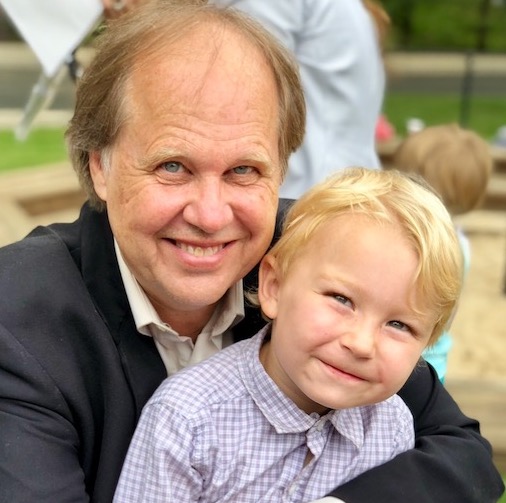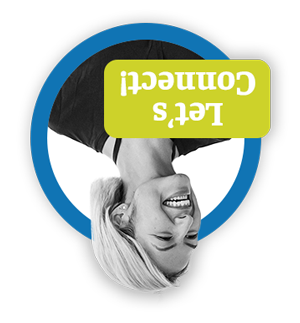Guest Article: The Transformative Power of Student-Professional Connections
By Chris Unger, Teaching Professor at Northeastern University: When high school senior Kate stepped into an operating room to observe a C-section, she knew her future had been decided. “This was what really, like, absolutely locked it in for me,” she recalls. “I’ll just never forget that.” Today, Kate is in the six-year medical program at the University of Missouri-Kansas City School of Medicine, her path illuminated by that pivotal moment of professional engagement in the Monett (Missouri) GO CAPS Medicine and Healthcare strand, working in and engaging with numerous healthcare providers in the local hospital. Kate’s story exemplifies the profound impact of students connecting with industry professionals early in their educational journey. These interactions, ranging from job shadowing to collaborative projects, are proving to be game-changers in how they think about their future and their opportunities.

Consider the story of a student from Uxbridge High School in Massachusetts who, through his school’s professional engagement program, had the opportunity to work directly with engineering experts. This collaboration led him to build a rotary engine that actually powered his Mazda car – a remarkable achievement for a high school student. His project was so impressive that it won top honors at an engineering showcase, competing against projects from students across the region. This hands-on experience, guided by industry professionals, not only deepened his understanding of engineering principles but also ignited a passion that shaped his future, leading him to graduate with honors from Wentworth Institute of Technology’s engineering program and pursuing a career in engineering.
Kabeer’s opportunity to work with professionals in the Cedar Falls CAPS program offers another compelling example of how engagement with professionals can shape a student’s future. As a student in the engineering strand, Kabeer took on the task of redesigning a stepstool for Kryton Engineered Metals, a local metal fabrication company, which challenged him to make it stronger, more appealing, and less costly. After much work using a variety of tools and prototyping design with the assistance of CAD-CAM systems, and feedback and guidance from the engineers at Kryton, his redesign turned out to be so good that the company prototyped it and sold it to a major corporation, a worldwide leader in cryogenic freezing materials. As a result of his ingenuity and observed skill, Kryton Engineered Metals continued to have him work for them throughout his college years, even offering to pay for his last two years of mechanical engineering studies at Iowa State in exchange for a commitment to work with them after graduation. Today, Kabeer is employed full-time at Kryton, a direct result of the connections and experience he gained through his CAPS project.
Stories like these are in abundance where students are able to meaningfully and purposefully engage with professionals on real-world projects with effective guidance and support from them. But so too can guest lectures and meet-and-greet events help students to see and hear about the various professional opportunities available to them. As Sadie commented, these encounters were transformative. “We would have speakers come in from different areas like administration, different areas of the hospital, just different professions,” she recounts. These diverse perspectives helped students like Sadie understand the breadth of opportunities within their chosen fields.

Moreover, these events often provide students with networking opportunities, allowing them to build professional connections early in their careers, with many students often leveraging these connections for internships, college recommendations, and even jobs.
Job shadowing too, a cornerstone of many professional engagement programs, offers students an unparalleled look into the day-to-day realities of various careers. Kate’s experience shadowing in different hospital departments was instrumental in solidifying her career choice. “I got to see everything,” she explains. “I did more shadowing, and then I kind of got an introduction into maybe what the education would look like, what day-to-day life would look like.” This immersive experience allows students to observe professionals in action, ask questions in real-time, and gain a realistic understanding of what a career in their chosen field might entail. For many students, job shadowing either confirms their career interests or helps them realize they might be better suited for a different path, saving time and resources along the way.
Internships and client projects, however, probably provide students with the greatest opportunity for direct hands-on and minds-on experience in their fields of interest, often resulting in such tangible outcomes as boosting their resumes, contributing to their college applications, and opening doorways to the work they want. For instance, Shelby’s work on creating a disaster response binder for a hospital gave her practical insight into healthcare operations, while Daria’s internship with the city’s water maintenance team sparked a passion for environmental engineering, leading to a fulfilling career where she now leads a statewide water quality organization. Similarly, at Uxbridge High School, a student from Central America gained hands-on experience with computer drafting, CNC coding, and laser engraving through engagement with local businesses. This led to a MACWIC certification, enabling the student, the first in his family to receive a high school diploma, to secure immediate employment in manufacturing upon graduation. These experiences demonstrate how direct engagement with professionals and industry-specific projects can provide tangible skills and certifications, opening doors to immediate career opportunities, particularly for students who might otherwise face employment barriers.
As these stories demonstrate, the value of connecting students with professionals cannot be overstated. Whether through job shadowing, guest lectures, internships, or client-based projects, these interactions provide a crucial bridge between classroom learning and real-world application. They offer students not just a glimpse into potential career paths, but also the opportunity to develop meaningful connections and insights that will serve them well into their professional lives.
In a rapidly evolving job market, such early exposure to professional environments may well be the key to preparing students not just for their first job, but for a lifetime of career success and personal growth. As Shelby aptly puts it, “I don’t think I even would have pursued a career in medicine if it weren’t for these professional experiences.” And therein lies the true power of connecting students with professionals – the power to inspire, to guide, and to transform young lives.
About the author: Chris Unger is a Teaching Professor in the Graduate Programs in Education including the Doctor of Education program at Northeastern University. His primary interest is in the design, development, and proliferation of learner-centered and agency-focused schools and schooling, entrepreneurship as a means of creating new possibilities in education, the support of change agents and change agent work in our educational ecosystem, and the transformation needed in support of youth, our communities, and society.

